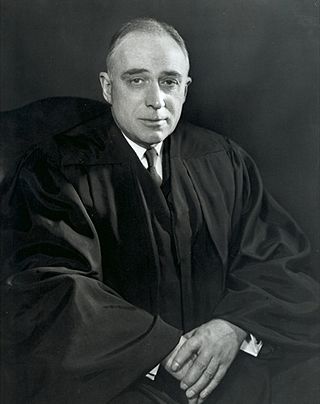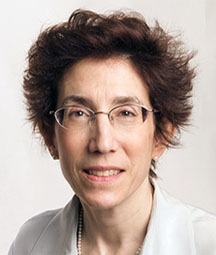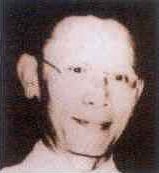
The chief justice of the United States is the chief judge of the Supreme Court of the United States and is the highest-ranking officer of the U.S. federal judiciary. Article II, Section 2, Clause 2 of the U.S. Constitution grants plenary power to the president of the United States to nominate, and, with the advice and consent of the United States Senate, appoint "Judges of the supreme Court", who serve until they die, resign, retire, or are impeached and convicted. The existence of a chief justice is only explicit in Article I, Section 3, Clause 6 which states that the chief justice shall preside over the impeachment trial of the president; this has occurred three times, for Andrew Johnson, Bill Clinton, and for Donald Trump’s first impeachment.
Bush v. Gore, 531 U.S. 98 (2000), was a landmark decision of the United States Supreme Court on December 12, 2000, that settled a recount dispute in Florida's 2000 presidential election between George W. Bush and Al Gore. On December 8, the Florida Supreme Court had ordered a statewide recount of all undervotes, over 61,000 ballots that the vote tabulation machines had missed. The Bush campaign immediately asked the U.S. Supreme Court to stay the decision and halt the recount. Justice Antonin Scalia, convinced that all the manual recounts being performed in Florida's counties were illegitimate, urged his colleagues to grant the stay immediately. On December 9, the five conservative justices on the Court granted the stay, with Scalia citing "irreparable harm" that could befall Bush, as the recounts would cast "a needless and unjustified cloud" over Bush's legitimacy. In dissent, Justice John Paul Stevens wrote that "counting every legally cast vote cannot constitute irreparable harm." Oral arguments were scheduled for December 11.

John Paul Stevens was an American lawyer and jurist who served as an associate justice of the Supreme Court of the United States from 1975 to 2010. At the time of his retirement, he was the second-oldest justice in the history of the U.S. Supreme Court and the third-longest-serving justice. At the time of his death in 2019 at age 99, he was the longest-lived Supreme Court justice ever. His long tenure saw him write for the Court on most issues of American law, including civil liberties, the death penalty, government action, and intellectual property. Despite being a registered Republican who throughout his life identified as a conservative, Stevens was considered to have been on the liberal side of the Court at the time of his retirement.
Baker v. Carr, 369 U.S. 186 (1962), was a landmark United States Supreme Court case in which the Court held that redistricting qualifies as a justiciable question under the equal protection clause of the Fourteenth Amendment, thus enabling federal courts to hear Fourteenth Amendment-based redistricting cases. The court summarized its Baker holding in a later decision as follows: "the Equal Protection Clause of the Fourteenth Amendment limits the authority of a State Legislature in designing the geographical districts from which representatives are chosen either for the State Legislature or for the Federal House of Representatives.". The court had previously held in Gomillion v. Lightfoot that districting claims over racial discrimination could be brought under the Fifteenth Amendment.

Harlan Fiske Stone was an American attorney and jurist who served as an associate justice of the U.S. Supreme Court from 1925 to 1941 and then as the 12th chief justice of the United States from 1941 until his death in 1946. He also served as the U.S. Attorney General from 1924 to 1925 under President Calvin Coolidge, with whom he had attended Amherst College as a young man. His most famous dictum was: "Courts are not the only agency of government that must be assumed to have capacity to govern."

John Marshall Harlan was an American lawyer and jurist who served as an associate justice of the U.S. Supreme Court from 1955 to 1971. Harlan is usually called John Marshall Harlan II to distinguish him from his grandfather, John Marshall Harlan, who served on the U.S. Supreme Court from 1877 to 1911.

Joseph Philo Bradley was an American jurist who served as an associate justice of the Supreme Court of the United States from 1870 to 1892. He was also a member of the Electoral Commission that decided the disputed 1876 United States presidential election.

John Glover Roberts Jr. is an American jurist who has served as the 17th chief justice of the United States since 2005. He has been described as having a moderate conservative judicial philosophy, though he is primarily an institutionalist. For his willingness to work with the Supreme Court's liberal bloc, Roberts has been regarded as a swing vote on the U.S. Supreme Court.
The appointment of federal judges for United States federal courts is done via nomination by the President of the United States and confirmation by the United States Senate. The tables below provide the composition of all Article III courts which include the Supreme Court and the Courts of Appeals at the end of each four year presidential term, as well as the current compositions of the District Courts and the Court of International Trade, categorizing the judges by the presidential term during which they were first appointed to their seats.
A dissenting opinion is an opinion in a legal case in certain legal systems written by one or more judges expressing disagreement with the majority opinion of the court which gives rise to its judgment.
A Segal–Cover score is an attempt to measure the "perceived qualifications and ideology" of nominees to the United States Supreme Court. The scores are created by analyzing pre-confirmation newspaper editorials regarding the nominations from The New York Times, Washington Post, Chicago Tribune, Los Angeles Times, St. Louis Post-Dispatch, and The Wall Street Journal. Each nominee receives two scores that range from 0 to 1 based on the average score of all articles from these sources:

The Supreme Court of the United States is the highest court in the federal judiciary of the United States. The procedures of the Court are governed by the U.S. Constitution, various federal statutes, and its own internal rules. Since 1869, the Court has consisted of one chief justice and eight associate justices. Justices are nominated by the president, and with the advice and consent (confirmation) of the U.S. Senate, appointed to the Court by the president. Once appointed, justices have lifetime tenure unless they resign, retire, or are removed from office.

Sandra Segal Ikuta is a United States circuit judge of the United States Court of Appeals for the Ninth Circuit.
A judicial opinion is a form of legal opinion written by a judge or a judicial panel in the course of resolving a legal dispute, providing the decision reached to resolve the dispute, and usually indicating the facts which led to the dispute and an analysis of the law used to arrive at the decision.

Jerry Edwin Smith is an American attorney and jurist serving as a United States circuit judge of the United States Court of Appeals for the Fifth Circuit.

Gregorio Milian Perfecto was a Filipino journalist, politician and jurist who served as an Associate Justice of the Supreme Court of the Philippines from 1945 to 1949. A controversial figure who was described as an "apostle of liberal causes", Perfecto was notable for his libertarian views, his colorful writing style, and the frequency of his dissenting opinions while on the Supreme Court.

Henry Billings Brown was an American jurist who served as an associate justice of the Supreme Court of the United States from 1891 to 1906.
Connick v. Thompson, 563 U.S. 51 (2011), is a United States Supreme Court case in which the Court considered whether a prosecutor's office can be held liable for a single Brady violation by one of its members on the theory that the office provided inadequate training.

The Supreme Court of the United States is the country's highest federal court. The Court has ultimate—and largely discretionary—appellate jurisdiction over all federal courts and state court cases involving issues of U.S. federal law, plus original jurisdiction over a small range of cases.
Charles Herman Pritchett was an American political scientist who served as a Professor Emeritus in Political Science at the University of Chicago. He later moved to the University of California Santa Barbara, where he taught until 1974.










